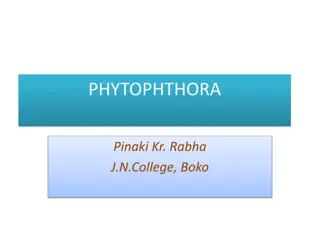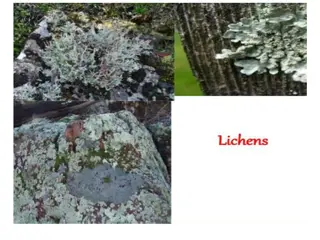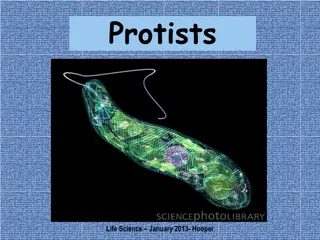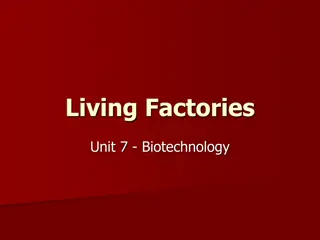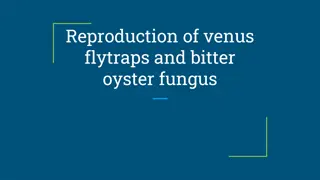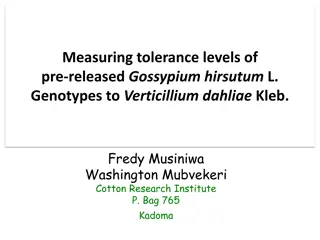Understanding Phytophthora: Destructive Plant Pathogen
Phytophthora is a destructive plant pathogen that infects various crops, causing symptoms like leaf lesions and rotting tubers. Its somatic structure includes profusely branched hyphae, and it reproduces asexually through zoospores. The germination process involves the spread of spores by wind and w
1 views • 21 slides
Understanding Synchytrium: Causes and Symptoms in Potatoes
Synchytrium is an obligate parasite causing black wart disease in potatoes. It affects underground parts, leading to cauliflower-like outgrowths on tubers. The fungus exhibits a unicellular structure and releases uniflagellate zoospores for asexual reproduction. Germination of prosorus results in th
0 views • 13 slides
Overview of Cephalosporins in Veterinary Pharmacology
Cephalosporins are a group of semisynthetic antibiotics derived from cephalosporin C obtained from a fungus. This chapter covers the introduction, chemistry, properties, solubility, classification, spectrum of activity, mechanism of action, applications, and side effects of cephalosporins. They offe
2 views • 29 slides
Understanding Lichens: A Symbiotic Organism in Nature
Lichens, a unique symbiotic organism combining a fungus and alga or cyanobacterium, are widely distributed and diverse in nature. Comprising of 186 plant species from 148 genera and 63 families, lichens are versatile in their adaptation to different habitats and substrates. This article delves into
0 views • 21 slides
Exploring the World of Protists: A Kingdom of Diversity
Protists are eukaryotes that cannot be classified as plants, animals, or fungi. They thrive in moist environments and showcase a remarkable diversity within the Kingdom Protista. From animal-like protozoa to plant-like autotrophs and fungus-like heterotrophs, this kingdom contains a wide array of un
0 views • 18 slides
Exploring the Diverse World of Protists Through Microscopic Observations
During this lab exercise, a wide variety of protists were observed, showcasing the diverse characteristics and behaviors within this group. The classification of protists is continuously evolving, focusing on convenience rather than evolutionary relationships. From autotrophs to heterotrophs with an
0 views • 20 slides
Understanding Yeast: The Living Organism and Its Respiration Processes
Explore the world of Saccharomyces cerevisiae (yeast) as a single-celled fungus that exists on all living matter. Learn about its genetic similarities to humans, its basic survival needs, and the processes of aerobic and anaerobic respiration, including fermentation. Discover how yeast, like us, rel
0 views • 26 slides
The Fascinating Reproduction and Characteristics of Venus Flytraps and Bitter Oyster Fungus
Venus flytraps are carnivorous plants native to North and South Carolina, while bitter oyster mushrooms belong to the Mycenaceae family and exhibit bioluminescent properties. Each has unique genetic makeup affecting their reproduction. Venus flytraps have evolved to catch prey with trigger hairs on
0 views • 7 slides
Tolerance Levels of Gossypium hirsutum L. Genotypes to Verticillium dahliae Kleb.
The study aims to measure the tolerance levels of pre-released Gossypium hirsutum L. genotypes to Verticillium dahliae Kleb, a soil-borne fungus causing Verticillium wilt in cotton. The research, conducted at the Cotton Research Institute, focuses on determining tolerance levels of new cotton genoty
0 views • 18 slides
